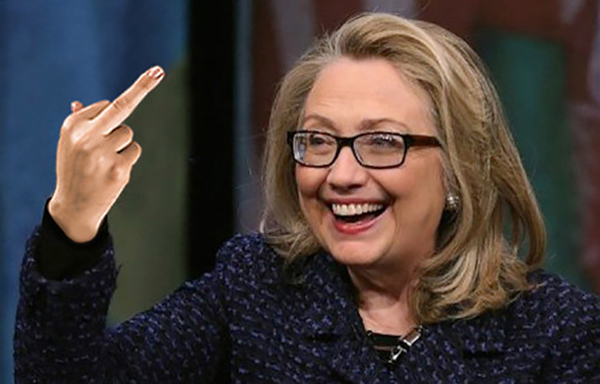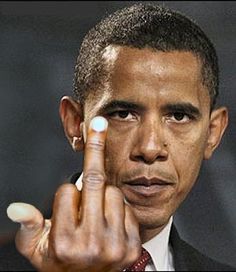-
Posts
11,834 -
Joined
-
Last visited
-
Days Won
337
Content Type
Profiles
Forums
Gallery
Events
Blogs
BMT Wiki
Collections
Store
Everything posted by 41chevy
-
Good to know the questions are keeping pace with the times....... Form N-400 03/26/16 N Page 12 of 20 Part 12. Additional Information About You (Person Applying for Naturalization) (continued) 7. Do you owe any overdue Federal, state, or local taxes? 8. Have you not filed a Federal, state, or local tax return since you became a lawful permanent resident? If you answered "Yes," did you consider yourself to be a "non-U.S. resident"? 9. Have you called yourself a "non-U.S. resident" on a Federal, state, or local tax return since you became a full permanent resident? 10. Have you ever been a member of, involved in, or in any way associated with, any organization, association, fund, foundation, party, club, society, or similar group in the United States or in any other location in the world?. If you answered "Yes," provide the information below. If you need extra space, attach the names of the other groups on additional sheets of paper and provide any evidence to support your answers. 10. Have you EVER been a member of, or in any way associated (either directly or indirectly) with:The Communist Party? Any other totalitarian party? 11. Have you EVER advocated (either directly or indirectly) the overthrow of any government by force or violence? 12. Between March 23, 1933 and May 8, 1945, did you work for or associate in any way (either directly or indirectly) with:The Nazi government of Germany? 13. Any government in any area occupied by, allied with, or established with the help of the Nazi government of Germany? 14. Have you EVER persecuted (either directly or indirectly) any person because of race, religion, national origin, membership in a particular social group, or political opinion? 15. German, Nazi terrorist organization? 16. Any German, Nazi, or S.S. military unit, paramilitary unit, self-defense unit, vigilante unit, citizen unit, police unit, government agency or office, extermination camp, concentration camp, prisoner of war camp, prison, labor camp, or transit camp?
- 1 reply
-
- 1
-

-
Thank god we now live in a country where a citizen doing something with out government support and showing human compassion is going to be illegal. . . about damn time there will be laws and hopefully severe punishment to prevent that sinful Christian thing........................................NOT
-

US House: cars are cleaner, so we should use less ethanol
41chevy replied to kscarbel2's topic in Odds and Ends
The Cellulosic Debacle Congress mandated purchase of 250 million gallons in 2011. Actual production: 1.6 million. December 14, 2015 'We'll fund additional research in cutting-edge methods of producing ethanol, not just from corn but from wood chips and stalks or switch grass. Our goal is to make this new kind of ethanol practical and competitive within six years." The Obama Administration has dumped $170 billion into solar and wind energy and battery operated cars. The President launched his version of a green energy revolution. The future he saw was biofuels. In addition to showering billions of dollars on corn ethanol, President Obama assured the nation that by 2012 cars and trucks could be powered by cellulosic fuels from switch grass and other plant life. To launch this wonder-fuel industry, President Obama have pumped at least $1.5 billion of grants and loan subsidies to fledgling producers. Most important, the Nancy Pelosi Congress passed and President Obama signed a law imposing mandates on oil companies to blend (the non existent) cellulosic fuel into conventional gasoline. This guaranteed producers a market. In 2010 the mandate was 100 million barrels, rising to 250 million in 2011 and 500 million in 2012. By the end of this decade the requirements leap to 10.5 billion gallons a year. When these mandates were established, no companies produced commercially viable cellulosic fuel. But the dream was: If you mandate and subsidize it, someone will build it. Guess what? Nobody has. Despite the taxpayer enticements, cellulosic fuel production won't be 250 million or even 25 million gallons. Last year (2015) the Environmental Protection Agency increased the required non existent additive by 35%. One reason the mandates can't be met is the half-dozen or so companies that received the first round of subsidies to produce cellulosic fuel never got off the ground. Some 70 million gallons, or 70% of the cellulosic supply to meet the 2010 mandate, was supposed to come from Alabama-based Cello Energy. Incredibly, those projections were made before Cello had built its plant to produce the fuel and before the technology was proven to work. In 2009 a jury in a civil fraud case ruled that Cello had lied about how much cellulosic fuel it could produce. Some of the fuel that Cello showed to investors was derived from petroleum, not plants. The firm produced little biofuel and in October 2010 it declared bankruptcy. It gets worse. Because there was no cellulosic fuel available, oil companies have had to purchase "waiver credits"—for failing to comply with a mandate to buy a product that doesn't exist. In 2010 to this year, the EPA has forced oil companies to pay about $10 million for these credits. . . per year. Since these costs are eventually passed on to consumers, the biofuels mandate is an invisible tax paid at the gas pump. And for what? An October 2011 report on biofuels by the National Academy of Sciences concluded that the mandates "may be an ineffective way to reduce global greenhouse gas emissions." Because production is so low, advanced cellulosic fuels also do very little to reduce U.S. dependence on foreign oil. The report notes that "currently, no commercially viable biorefineries exist for converting cellulosic biomass to fuel." Why? Because of what the National Academy report calls "the high cost of producing cellulosic biofuels compared with petroleum-based fuels, and uncertainties in future biofuel markets." The report does say that technological breakthroughs in the future, could make cellulosic fuels cost-competitive, but that same leap of faith has driven subsidies to alternative energy for 40 years. Still, the subsidies roll on. In August 2011 the Obama Administration funded a $510 million program in partnership with the Navy to produce advanced biofuels for the military. In September the feds loaned $134 million to Abengoa Bioenergy to build a cellulosic plant in Kansas. The optimistic forecast is that this plant will produce about 3 million barrels a year—a fraction of what Washington promised in 2009. In September the Department of Energy provided POET, which advertises itself as the "world's largest ethanol producer," a $705 million loan guarantee for cellulosic additives. Congress is subsidizing a product that didn't exist, mandated its purchase and use though it still didn't exist, is punishing oil companies for not buying the product that doesn't exist, and is now doubling down on the subsidies in the hope that someday it might exist. I'd call this the march of folly, but that's unfair to fools. -
Lawmaker: Licensing for Cajun Navy not meant to limit, but Empower NEW ORLEANS – The Good Samaritan who rescued hundreds, maybe thousands, of people during the 'Great Flood of 2016' said he was not happy after a state lawmaker announced he wants to introduce legislation around future actions by citizen heroes. Some of these citizen heroes, a loosely-organized group called the 'Cajun Navy,' gained national attention for their rescue efforts last week, but that attention is nowhere near the pushback lawmakers are discussing when it comes to a lawmakers proposal to require permits for citizen rescue groups. For the Cajun Navy, it didn't matter if it was during day or night. People with boats took it upon themselves to save strangers, even when their own property was flooding. Cajun Navy member Dustin Clouatre of St. Amant said he hopped into his pleasure skiff and with others, cleared out entire neighborhoods under water. "For the most part, these people are not going to wait for assistance," Clouatre said. "They're doers." Republican State Senator Jonathan "J.P." Perry of the Vermilion-Lafayette area said he is working on legislation that could require training, certificates and a permit fee to allow these Good Samaritans to get past law enforcement into devastated areas. In a radio interview on News Talk 96.5 KPEL in Lafayette, Sen. Perry said it comes down to two main points for law enforcement officials. “At the end of the day, there are going to be two things that are going to be the hurdle when you approach it from the state’s standpoint,” Sen. Perry said. “Liability is going to be number one for them. They don’t want the liability of someone going out to rescue someone and then not being able to find them, and secondly, there’s a cost.” Perry continues by saying the liability issue could be solved by something like a waiver that boaters sign prior to a natural disaster. Clouatre and members of the 'Cajun Navy' said they do not understand the regulations. "How can you regulate people helping people? That doesn't make sense to me," Clouatre said. Senator Perry did not return phone calls for a comment at the time this story aired on WWL-TV, but the senator took to Facebook Tuesday night to explain the logistics and reasoning behind his proposal. "The intent of what I want to do is to completely unregulate it, to where our volunteers are not stopped from going out," he said in the Facebook video. "It is basically to remove any restrictions and allow people to get to our citizens quicker." Perry said in the video his goal was to clear up "misinformation" after an initial Lafayette radio interview where he discussed the subject. “At the end of the day, there are going to be two things that are going to be the hurdle when you approach it from the state’s standpoint,” said Perry in the interview, per WWL-TV. “Liability is going to be number one for them. They don’t want the liability of someone going out to rescue someone and then not being able to find them (the rescuers) and, secondly, there’s a cost.” Some who took part in the rescue parties have spoken out against the proposal, including Dustin Clouatre of St. Amant. "How can you regulate people helping people? That doesn't make sense to me," said Clouatre to WWL-TV. In Livingston Parish, officials initially prevented private citizens from heading into the waters to render aid, but as calls from stranded residents mounted, they relented. .
-

"People should and do trust me" - Hillary Clinton
41chevy replied to kscarbel2's topic in Odds and Ends
New York Times Cash Flowed to Clinton Foundation Amid Russian Uranium Deal By JO BECKER and MIKE McINTIRE APRIL 23, 2015 A Uranium One sign that points to a 35,000-acre ranch owned by John Christensen, near the town of Gillette, Wyo. Uranium One has the mining rights to Mr. Christensen’s property. The headline on the website Pravda trumpeted President Vladimir V. Putin’s latest coup, its nationalistic fervor recalling an era when its precursor served as the official mouthpiece of the Kremlin: “Russian Nuclear Energy Conquers the World.” The article, in January 2013, detailed how the Russian atomic energy agency, Rosatom, had taken over a Canadian company with uranium-mining stakes stretching from Central Asia to the American West. The deal made Rosatom one of the world’s largest uranium producers and brought Mr. Putin closer to his goal of controlling much of the global uranium supply chain. But the untold story behind that story is one that involves not just the Russian president, but also a former American president and a woman who would like to be the next one. At the heart of the tale are several men, leaders of the Canadian mining industry, who have been major donors to the charitable endeavors of former President Bill Clinton and his family. Members of that group built, financed and eventually sold off to the Russians a company that would become known as Uranium One. Beyond mines in Kazakhstan that are among the most lucrative in the world, the sale gave the Russians control of one-fifth of all uranium production capacity in the United States. Since uranium is considered a strategic asset, with implications for national security, the deal had to be approved by a committee composed of representatives from a number of United States government agencies. Among the agencies that eventually signed off was the State Department, then headed by Mr. Clinton’s wife, Hillary Rodham Clinton. As the Russians gradually assumed control of Uranium One in three separate transactions from 2009 to 2013, Canadian records show, a flow of cash made its way to the Clinton Foundation. Uranium One’s chairman used his family foundation to make four donations totaling $2.35 million. Those contributions were not publicly disclosed by the Clintons, despite an agreement Mrs. Clinton had struck with the Obama White House to publicly identify all donors. Other people with ties to the company made donations as well. And shortly after the Russians announced their intention to acquire a majority stake in Uranium One, Mr. Clinton received $500,000 for a Moscow speech from a Russian investment bank with links to the Kremlin that was promoting Uranium One stock. Frank Giustra, right, a mining financier, has donated $31.3 million to the foundation run by former President Bill Clinton, left. At the time, both Rosatom and the United States government made promises intended to ease concerns about ceding control of the company’s assets to the Russians. Those promises have been repeatedly broken, records show. The New York Times’s examination of the Uranium One deal is based on dozens of interviews, as well as a review of public records and securities filings in Canada, Russia and the United States. Some of the connections between Uranium One and the Clinton Foundation were unearthed by Peter Schweizer, a former fellow at the right-leaning Hoover Institution and author of the forthcoming book “Clinton Cash.” Mr. Schweizer provided a preview of material in the book to The Times, which scrutinized his information and built upon it with its own reporting. Whether the donations played any role in the approval of the uranium deal is unknown. But the episode underscores the special ethical challenges presented by the Clinton Foundation, headed by a former president who relied heavily on foreign cash to accumulate $250 million in assets even as his wife helped steer American foreign policy as secretary of state, presiding over decisions with the potential to benefit the foundation’s donors. In a statement, Brian Fallon, a spokesman for Mrs. Clinton’s presidential campaign, said no one “has ever produced a shred of evidence supporting the theory that Hillary Clinton ever took action as secretary of state to support the interests of donors to the Clinton Foundation.” He emphasized that multiple United States agencies, as well as the Canadian government, had signed off on the deal and that, in general, such matters were handled at a level below the secretary. “To suggest the State Department, under then-Secretary Clinton, exerted undue influence in the U.S. government’s review of the sale of Uranium One is utterly baseless,” he added. American political campaigns are barred from accepting foreign donations. But foreigners may give to foundations in the United States. In the days since Mrs. Clinton announced her candidacy for president, the Clinton Foundation has announced changes meant to quell longstanding concerns about potential conflicts of interest in such donations; it has limited donations from foreign governments, with many, like Russia’s, barred from giving to all but its health care initiatives. That policy stops short of a more stringent agreement between Mrs. Clinton and the Obama administration that was in effect while she was secretary of state. Either way, the Uranium One deal highlights the limits of such prohibitions. The foundation will continue to accept contributions from foreign sources whose interests, like Uranium One’s, may overlap with those of foreign governments, some of which may be at odds with the United States. When the Uranium One deal was approved, the geopolitical backdrop was far different from today’s. The Obama administration was seeking to “reset” strained relations with Russia. The deal was strategically important to Mr. Putin, who shortly after the Americans gave their blessing sat down for a staged interview with Rosatom’s chief executive, Sergei Kiriyenko. “Few could have imagined in the past that we would own 20 percent of U.S. reserves,” Mr. Kiriyenko told Mr. Putin. Donations to the Clinton Foundation, and a Russian Uranium Takeover Uranium investors gave millions to the Clinton Foundation while Secretary of State Hillary Rodham Clinton’s office was involved in approving a Russian bid for mining assets in Kazakhstan and the United States. Now, after Russia’s annexation of Crimea and aggression in Ukraine, the Moscow-Washington relationship is devolving toward Cold War levels, a point several experts made in evaluating a deal so beneficial to Mr. Putin, a man known to use energy resources to project power around the world. “Should we be concerned? Absolutely,” said Michael McFaul, who served under Mrs. Clinton as the American ambassador to Russia but said he had been unaware of the Uranium One deal until asked about it. “Do we want Putin to have a monopoly on this? Of course we don’t. We don’t want to be dependent on Putin for anything in this climate.” A Seat at the Table The path to a Russian acquisition of American uranium deposits began in 2005 in Kazakhstan, where the Canadian mining financier Frank Giustra orchestrated his first big uranium deal, with Mr. Clinton at his side. The two men had flown aboard Mr. Giustra’s private jet to Almaty, Kazakhstan, where they dined with the authoritarian president, Nursultan A. Nazarbayev. Mr. Clinton handed the Kazakh president a propaganda coup when he expressed support for Mr. Nazarbayev’s bid to head an international elections monitoring group, undercutting American foreign policy and criticism of Kazakhstan’s poor human rights record by, among others, his wife, then a senator. Within days of the visit, Mr. Giustra’s fledgling company, UrAsia Energy Ltd., signed a preliminary deal giving it stakes in three uranium mines controlled by the state-run uranium agency Kazatomprom. If the Kazakh deal was a major victory, UrAsia did not wait long before resuming the hunt. In 2007, it merged with Uranium One, a South African company with assets in Africa and Australia, in what was described as a $3.5 billion transaction. The new company, which kept the Uranium One name, was controlled by UrAsia investors including Ian Telfer, a Canadian who became chairman. Through a spokeswoman, Mr. Giustra, whose personal stake in the deal was estimated at about $45 million, said he sold his stake in 2007. Soon, Uranium One began to snap up companies with assets in the United States. In April 2007, it announced the purchase of a uranium mill in Utah and more than 38,000 acres of uranium exploration properties in four Western states, followed quickly by the acquisition of the Energy Metals Corporation and its uranium holdings in Wyoming, Texas and Utah. That deal made clear that Uranium One was intent on becoming “a powerhouse in the United States uranium sector with the potential to become the domestic supplier of choice for U.S. utilities,” the company declared. Ian Telfer was chairman of Uranium One and made large donations to the Clinton Foundation. Still, the company’s story was hardly front-page news in the United States — until early 2008, in the midst of Mrs. Clinton’s failed presidential campaign, when The Times published an article revealing the 2005 trip’s link to Mr. Giustra’s Kazakhstan mining deal. It also reported that several months later, Mr. Giustra had donated $31.3 million to Mr. Clinton’s foundation. (In a statement issued after this article appeared online, Mr. Giustra said he was “extremely proud” of his charitable work with Mr. Clinton, and he urged the media to focus on poverty, health care and “the real challenges of the world.”) Though the 2008 article quoted the former head of Kazatomprom, Moukhtar Dzhakishev, as saying that the deal required government approval and was discussed at a dinner with the president, Mr. Giustra insisted that it was a private transaction, with no need for Mr. Clinton’s influence with Kazakh officials. He described his relationship with Mr. Clinton as motivated solely by a shared interest in philanthropy. As if to underscore the point, five months later Mr. Giustra held a fund-raiser for the Clinton Giustra Sustainable Growth Initiative, a project aimed at fostering progressive environmental and labor practices in the natural resources industry, to which he had pledged $100 million. The star-studded gala, at a conference center in Toronto, featured performances by Elton John and Shakira and celebrities like Tom Cruise, John Travolta and Robin Williams encouraging contributions from the many so-called F.O.F.s — Friends of Frank — in attendance, among them Mr. Telfer. In all, the evening generated $16 million in pledges, according to an article in The Globe and Mail. “None of this would have been possible if Frank Giustra didn’t have a remarkable combination of caring and modesty, of vision and energy and iron determination,” Mr. Clinton told those gathered, adding: “I love this guy, and you should, too.” But what had been a string of successes was about to hit a speed bump. Arrest and Progress By June 2009, a little over a year after the star-studded evening in Toronto, Uranium One’s stock was in free-fall, down 40 percent. Mr. Dzhakishev, the head of Kazatomprom, had just been arrested on charges that he illegally sold uranium deposits to foreign companies, including at least some of those won by Mr. Giustra’s UrAsia and now owned by Uranium One. Publicly, the company tried to reassure shareholders. Its chief executive, Jean Nortier, issued a confident statement calling the situation a “complete misunderstanding.” He also contradicted Mr. Giustra’s contention that the uranium deal had not required government blessing. “When you do a transaction in Kazakhstan, you need the government’s approval,” he said, adding that UrAsia had indeed received that approval. Bill Clinton met with Vladimir V. Putin in Moscow in 2010. But privately, Uranium One officials were worried they could lose their joint mining ventures. American diplomatic cables made public by WikiLeaks also reflect concerns that Mr. Dzhakishev’s arrest was part of a Russian power play for control of Kazakh uranium assets. At the time, Russia was already eying a stake in Uranium One, Rosatom company documents show. Rosatom officials say they were seeking to acquire mines around the world because Russia lacks sufficient domestic reserves to meet its own industry needs. It was against this backdrop that the Vancouver-based Uranium One pressed the American Embassy in Kazakhstan, as well as Canadian diplomats, to take up its cause with Kazakh officials, according to the American cables. “We want more than a statement to the press,” Paul Clarke, a Uranium One executive vice president, told the embassy’s energy officer on June 10, the officer reported in a cable. “That is simply chitchat.” What the company needed, Mr. Clarke said, was official written confirmation that the licenses were valid. The American Embassy ultimately reported to the secretary of state, Mrs. Clinton. Though the Clarke cable was copied to her, it was given wide circulation, and it is unclear if she would have read it; the Clinton campaign did not address questions about the cable. What is clear is that the embassy acted, with the cables showing that the energy officer met with Kazakh officials to discuss the issue on June 10 and 11. Three days later, a wholly owned subsidiary of Rosatom completed a deal for 17 percent of Uranium One. And within a year, the Russian government substantially upped the ante, with a generous offer to shareholders that would give it a 51 percent controlling stake. But first, Uranium One had to get the American government to sign off on the deal. Among the Donors to the Clinton Foundation Frank Giustra $31.3 million and a pledge for $100 million more He built a company that later merged with Uranium One. Ian Telfer $2.35 million Mining investor who was chairman of Uranium One when an arm of the Russian government, Rosatom, acquired it. Paul Reynolds $1 million to $5 million Adviser on 2007 UrAsia-Uranium One merger. Later helped raise $260 million for the company. Frank Holmes $250,000 to $500,000 Chief Executive of U.S. Global Investors Inc., which held $4.7 million in Uranium One shares in the first quarter of 2011. Neil Woodyer $50,000 to $100,000 Adviser to Uranium One. Founded Endeavour Mining with Mr. Giustra. GMP Securities Ltd. Donating portion of profits Worked on debt issue that raised $260 million for Uranium One. The Power to Say No When a company controlled by the Chinese government sought a 51 percent stake in a tiny Nevada gold mining operation in 2009, it set off a secretive review process in Washington, where officials raised concerns primarily about the mine’s proximity to a military installation, but also about the potential for minerals at the site, including uranium, to come under Chinese control. The officials killed the deal. Such is the power of the Committee on Foreign Investment in the United States. The committee comprises some of the most powerful members of the cabinet, including the attorney general, the secretaries of the Treasury, Defense, Homeland Security, Commerce and Energy, and the secretary of state. They are charged with reviewing any deal that could result in foreign control of an American business or asset deemed important to national security. The national security issue at stake in the Uranium One deal was not primarily about nuclear weapons proliferation; the United States and Russia had for years cooperated on that front, with Russia sending enriched fuel from decommissioned warheads to be used in American nuclear power plants in return for raw uranium. Instead, it concerned American dependence on foreign uranium sources. While the United States gets one-fifth of its electrical power from nuclear plants, it produces only around 20 percent of the uranium it needs, and most plants have only 18 to 36 months of reserves, according to Marin Katusa, author of “The Colder War: How the Global Energy Trade Slipped From America’s Grasp.” “The Russians are easily winning the uranium war, and nobody’s talking about it,” said Mr. Katusa, who explores the implications of the Uranium One deal in his book. “It’s not just a domestic issue but a foreign policy issue, too.” When ARMZ, an arm of Rosatom, took its first 17 percent stake in Uranium One in 2009, the two parties signed an agreement, found in securities filings, to seek the foreign investment committee’s review. But it was the 2010 deal, giving the Russians a controlling 51 percent stake, that set off alarm bells. Four members of the House of Representatives signed a letter expressing concern. Two more began pushing legislation to kill the deal. Senator John Barrasso, a Republican from Wyoming, where Uranium One’s largest American operation was, wrote to President Obama, saying the deal “would give the Russian government control over a sizable portion of America’s uranium production capacity.” President Putin during a meeting with Rosatom’s chief executive, Sergei Kiriyenko, in December 2007. “Equally alarming,” Mr. Barrasso added, “this sale gives ARMZ a significant stake in uranium mines in Kazakhstan.” Uranium One’s shareholders were also alarmed, and were “afraid of Rosatom as a Russian state giant,” Sergei Novikov, a company spokesman, recalled in an interview. He said Rosatom’s chief, Mr. Kiriyenko, sought to reassure Uranium One investors, promising that Rosatom would not break up the company and would keep the same management, including Mr. Telfer, the chairman. Another Rosatom official said publicly that it did not intend to increase its investment beyond 51 percent, and that it envisioned keeping Uranium One a public company American nuclear officials, too, seemed eager to assuage fears. The Nuclear Regulatory Commission wrote to Mr. Barrasso assuring him that American uranium would be preserved for domestic use, regardless of who owned it. “In order to export uranium from the United States, Uranium One Inc. or ARMZ would need to apply for and obtain a specific NRC license authorizing the export of uranium for use as reactor fuel,” the letter said. Still, the ultimate authority to approve or reject the Russian acquisition rested with the cabinet officials on the foreign investment committee, including Mrs. Clinton — whose husband was collecting millions in donations from people associated with Uranium One. Undisclosed Donations Before Mrs. Clinton could assume her post as secretary of state, the White House demanded that she sign a memorandum of understanding placing limits on the activities of her husband’s foundation. To avoid the perception of conflicts of interest, beyond the ban on foreign government donations, the foundation was required to publicly disclose all contributors. To judge from those disclosures — which list the contributions in ranges rather than precise amounts — the only Uranium One official to give to the Clinton Foundation was Mr. Telfer, the chairman, and the amount was relatively small: no more than $250,000, and that was in 2007, before talk of a Rosatom deal began percolating. Uranium One’s Russian takeover was approved by the United States while Hillary Rodham Clinton was secretary of state. But a review of tax records in Canada, where Mr. Telfer has a family charity called the Fernwood Foundation, shows that he donated millions of dollars more, during and after the critical time when the foreign investment committee was reviewing his deal with the Russians. With the Russians offering a special dividend, shareholders like Mr. Telfer stood to profit. His donations through the Fernwood Foundation included $1 million reported in 2009, the year his company appealed to the American Embassy to help it keep its mines in Kazakhstan; $250,000 in 2010, the year the Russians sought majority control; as well as $600,000 in 2011 and $500,000 in 2012. Mr. Telfer said that his donations had nothing to do with his business dealings, and that he had never discussed Uranium One with Mr. or Mrs. Clinton. He said he had given the money because he wanted to support Mr. Giustra’s charitable endeavors with Mr. Clinton. “Frank and I have been friends and business partners for almost 20 years,” he said. The Clinton campaign left it to the foundation to reply to questions about the Fernwood donations; the foundation did not provide a response. Mr. Telfer’s undisclosed donations came in addition to between $1.3 million and $5.6 million in contributions, which were reported, from a constellation of people with ties to Uranium One or UrAsia, the company that originally acquired Uranium One’s most valuable asset: the Kazakh mines. Without those assets, the Russians would have had no interest in the deal: “It wasn’t the goal to buy the Wyoming mines. The goal was to acquire the Kazakh assets, which are very good,” Mr. Novikov, the Rosatom spokesman, said in an interview. Amid this influx of Uranium One-connected money, Mr. Clinton was invited to speak in Moscow in June 2010, the same month Rosatom struck its deal for a majority stake in Uranium One. The $500,000 fee — among Mr. Clinton’s highest — was paid by Renaissance Capital, a Russian investment bank with ties to the Kremlin that has invited world leaders, including Tony Blair, the former British prime minister, to speak at its investor conferences. Renaissance Capital analysts talked up Uranium One’s stock, assigning it a “buy” rating and saying in a July 2010 research report that it was “the best play” in the uranium markets. In addition, Renaissance Capital turned up that same year as a major donor, along with Mr. Giustra and several companies linked to Uranium One or UrAsia, to a small medical charity in Colorado run by a friend of Mr. Giustra’s. In a newsletter to supporters, the friend credited Mr. Giustra with helping get donations from “businesses around the world.” John Christensen sold the mining rights on his ranch in Wyoming to Uranium One. Renaissance Capital would not comment on the genesis of Mr. Clinton’s speech to an audience that included leading Russian officials, or on whether it was connected to the Rosatom deal. According to a Russian government news service, Mr. Putin personally thanked Mr. Clinton for speaking. A person with knowledge of the Clinton Foundation’s fund-raising operation, who requested anonymity to speak candidly about it, said that for many people, the hope is that money will in fact buy influence: “Why do you think they are doing it — because they love them?” But whether it actually does is another question. And in this case, there were broader geopolitical pressures that likely came into play as the United States considered whether to approve the Rosatom-Uranium One deal. Diplomatic Considerations If doing business with Rosatom was good for those in the Uranium One deal, engaging with Russia was also a priority of the incoming Obama administration, which was hoping for a new era of cooperation as Mr. Putin relinquished the presidency — if only for a term — to Dmitri A. Medvedev. “The assumption was we could engage Russia to further core U.S. national security interests,” said Mr. McFaul, the former ambassador. It started out well. The two countries made progress on nuclear proliferation issues, and expanded use of Russian territory to resupply American forces in Afghanistan. Keeping Iran from obtaining a nuclear weapon was among the United States’ top priorities, and in June 2010 Russia signed off on a United Nations resolution imposing tough new sanctions on that country. Two months later, the deal giving ARMZ a controlling stake in Uranium One was submitted to the Committee on Foreign Investment in the United States for review. Because of the secrecy surrounding the process, it is hard to know whether the participants weighed the desire to improve bilateral relations against the potential risks of allowing the Russian government control over the biggest uranium producer in the United States. The deal was ultimately approved in October, following what two people involved in securing the approval said had been a relatively smooth process. Not all of the committee’s decisions are personally debated by the agency heads themselves; in less controversial cases, deputy or assistant secretaries may sign off. But experts and former committee members say Russia’s interest in Uranium One and its American uranium reserves seemed to warrant attention at the highest levels. Moukhtar Dzhakishev was arrested in 2009 while the chief of Kazatomprom. “This deal had generated press, it had captured the attention of Congress and it was strategically important,” said Richard Russell, who served on the committee during the George W. Bush administration. “When I was there invariably any one of those conditions would cause this to get pushed way up the chain, and here you had all three.” And Mrs. Clinton brought a reputation for hawkishness to the process; as a senator, she was a vocal critic of the committee’s approval of a deal that would have transferred the management of major American seaports to a company based in the United Arab Emirates, and as a presidential candidate she had advocated legislation to strengthen the process. The Clinton campaign spokesman, Mr. Fallon, said that in general, these matters did not rise to the secretary’s level. He would not comment on whether Mrs. Clinton had been briefed on the matter, but he gave The Times a statement from the former assistant secretary assigned to the foreign investment committee at the time, Jose Fernandez. While not addressing the specifics of the Uranium One deal, Mr. Fernandez said, “Mrs. Clinton never intervened with me on any C.F.I.U.S. matter.” Mr. Fallon also noted that if any agency had raised national security concerns about the Uranium One deal, it could have taken them directly to the president. Anne-Marie Slaughter, the State Department’s director of policy planning at the time, said she was unaware of the transaction — or the extent to which it made Russia a dominant uranium supplier. But speaking generally, she urged caution in evaluating its wisdom in hindsight. “Russia was not a country we took lightly at the time or thought was cuddly,” she said. “But it wasn’t the adversary it is today.” That renewed adversarial relationship has raised concerns about European dependency on Russian energy resources, including nuclear fuel. The unease reaches beyond diplomatic circles. In Wyoming, where Uranium One equipment is scattered across his 35,000-acre ranch, John Christensen is frustrated that repeated changes in corporate ownership over the years led to French, South African, Canadian and, finally, Russian control over mining rights on his property. “I hate to see a foreign government own mining rights here in the United States,” he said. “I don’t think that should happen.” Mr. Christensen, 65, noted that despite assurances by the Nuclear Regulatory Commission that uranium could not leave the country without Uranium One or ARMZ obtaining an export license — which they do not have — yellowcake from his property was routinely packed into drums and trucked off to a processing plant in Canada. Asked about that, the commission confirmed that Uranium One has, in fact, shipped yellowcake to Canada even though it does not have an export license. Instead, the transport company doing the shipping, RSB Logistic Services, has the license. A commission spokesman said that “to the best of our knowledge” most of the uranium sent to Canada for processing was returned for use in the United States. A Uranium One spokeswoman, Donna Wichers, said 25 percent had gone to Western Europe and Japan. At the moment, with the uranium market in a downturn, nothing is being shipped from the Wyoming mines. The “no export” assurance given at the time of the Rosatom deal is not the only one that turned out to be less than it seemed. Despite pledges to the contrary, Uranium One was delisted from the Toronto Stock Exchange and taken private. As of 2013, Rosatom’s subsidiary, ARMZ, owned 100 percent of it. Correction: April 23, 2015 An earlier version of this article misstated, in one instance, the surname of a fellow at the Hoover Institution. He is Peter Schweizer, not Schweitzer. An earlier version also incorrectly described the Clinton Foundation’s agreement with the Obama administration regarding foreign-government donations while Hillary Rodham Clinton was secretary of state. Under the agreement, the foundation would not accept new donations from foreign governments, though it could seek State Department waivers in specific cases. It was not barred from accepting all foreign-government donations. Correction: April 30, 2015 An article on Friday about contributions to the Clinton Foundation from people associated with a Canadian uranium-mining company described incorrectly the foundation’s agreement with the Obama administration regarding foreign-government donations while Hillary Clinton was secretary of state. Under the agreement, the foundation would not accept new donations from foreign governments, though it could seek State Department waivers in specific cases. The foundation was not barred from accepting all foreign-government donations. Andrew E. Kramer contributed reporting. Sarah Cohen contributed research. -

"People should and do trust me" - Hillary Clinton
41chevy replied to kscarbel2's topic in Odds and Ends
It would be simpler for Hillary to just "blame Bush" , after all it worked great for Obama over the past 7 1/2 years ... -
Go to Chevs of the 40's Paul https://www.chevsofthe40s.com/dept/Wiper/cat/Arms+%26+Blades.html
-
That design dates back to the early 1920's. They were big for riggers moving heavy machinery and such. Some where I have photos of one from about 1920 in a museum. Hydraulic steering, chain front drive and same bed as the Murty. Also a rear drive 1918 Doane with the same design cues. The cab on the Murty is a 1946 to 1948 Chevrolet or GMC truck cab assembly.
-
There WILL NOT be a U.S.A. any more if (when) she is elected and it'll go down hill further as her term goes on.
-

Ol' #20 going in for a facelift
41chevy replied to Superdog's topic in Antique and Classic Mack Trucks General Discussion
Sounds like a great deal, I'd like to find my first truck (a D-500) but it was sold 36 years ago and probably came back a few times as goods in Wal Mart. Paul -
Pretty darn slick unit. The Boss says NO F'in way, you have too many already . . . http://www.hemmings.com/classifieds/cars-for-sale/mixed/unspecified/1785500.html?refer=news#PhotoSwipe1471786763989 http://www.historic-vehicles.com/1946-red-murty.html
-

Frame refurbishement
41chevy replied to mackniac's topic in Exterior, Cab, Accessories and Detailing
Most States here and all insurance companies (and maybe DOT) require gas shielded MIG or TIG for all chassis and structural repairs. Purer and cleaner weld and with the limited heat area less susceptible to cracking or other failures. Paul -
Four had definite ties to Osma Binladin. His Justice Department and State Department do not consider them threats. It is nothing more than the President keeping election promise and for his legacy. Nothing more, nothing less. He sees no threats or anything else. With 19 more due for release, that will only leave 19 incarcerated there. With Andrew Coumo's tentative agreement to put some in Ossining (Sing-Sing) , the President will eliminate the "need" to keep it open. All part of the "plan".
-
What do you plan on using it for? That will have a lot to do with wheel base. I personally would get the rails as long as the one on the truck are, you can always move the rears forward and cut it, not easy to do the reverse.
-
both.
-
It's a 1969 or 1970 and has been rebuild a few times, I have no idea what the HDX cost than but to hazard a guess, probably 65 or 75 grand? It was before Signal bought them and than PAACAR bought them in the mid 1970's and closed them down.
-
If that is the case, we owe Russia monies in the Billions that Tsar Nicolas paid Remington Arms (in goild) in 1917 for arms to equip his White Russian Army top battle the Reds.
-
Even Carter didn't pay or negotiate with terrorists or the enemy.
-
Here is Dave Mills Hayes with a Columbia Trailer with factory water cooled brakes. Dave Mills bought this#6 truck from Truesdale's over in Sechelt a few years back. The water system is filled at least once a day depending on how steep the hills are and how many trips you make per shift If the haul you are on is steep then you water up EVERY trip if its not too steep then you dont use as much water so you can maybe haul for a couple trips before watering up. The 12 lbs of air in the water tank is what actually pushes the water flow to the trailer. 3/8ths water pipe to each wheel and the water spout is usually mounted at the 10:00 -2:00 position so the water will flow over the drum as the wheels are turning When coming down a steep hill with 100Tons or more of logs the water on the drums cause's steam and you can tell how you are driving by watching the steam--Too little steam and you are going too slow and too much steam and maybe your going too fast its like a formula so to speak The weights that are playing with are unreal The truck and trailer empty weighs 40 tons --then add 100-120 tons of logs and then a 32 percent grade and it gets interesting , OH by the way its easy to break a drum using your water wrong. They generally have 8 brakes 4 truck 4 trailer the brake size is truck 7x20 and trailer is 8x20 most highway trucks have 12 brakes 6 truck 6 trailer and their brake size is 16 1/2x8 5/8 truck and trailer plus they have two front brakes on the steering axle that are 16 1/2 x 5 now this is on a typical tri-axle logging truck and tridem log trailer so this gives you kind of a picture of how much more brakes the average highway truck versus off highway trucks For off highway you don't have scales you figure the weight by log scale in meters so for most part 1 meter= 1 ton
-
I was in the tail end of operation Fish Hook til Nixon decided that Kent State was more news worthy. Nice to see a country honor them. . Paul
-
Look at the photo blown up, there is a good size fuel tank under the right door.
-
Or 63 with a yard and shop full of projects . . .
-
If you can do it with out removing the cab and power pack I would. You'll be able to see more of what is possible with the winch off. Paul
BigMackTrucks.com
BigMackTrucks.com is a support forum for antique, classic and modern Mack Trucks! The forum is owned and maintained by Watt's Truck Center, Inc. an independent, full service Mack dealer. The forums are not affiliated with Mack Trucks, Inc.
Our Vendors and Advertisers
Thank you for your support!











